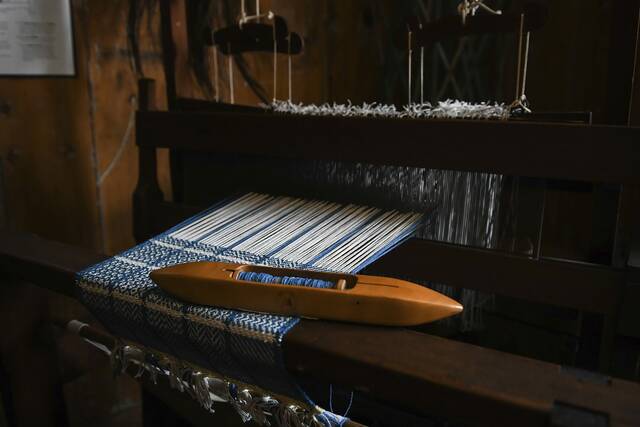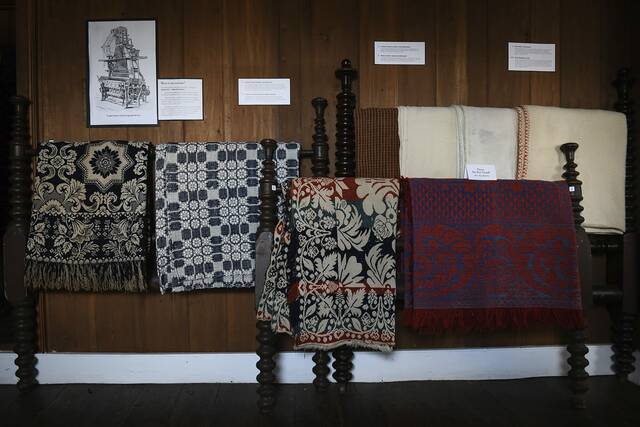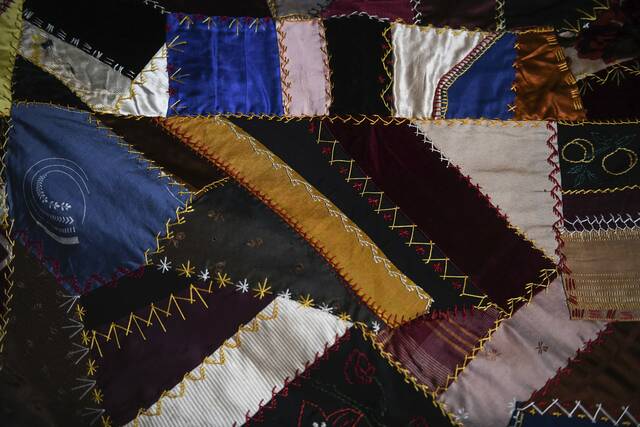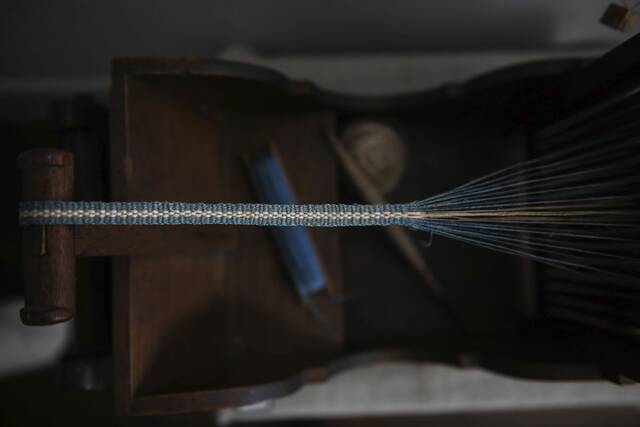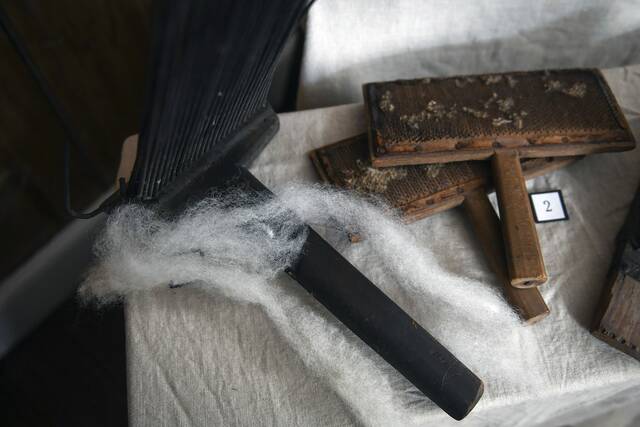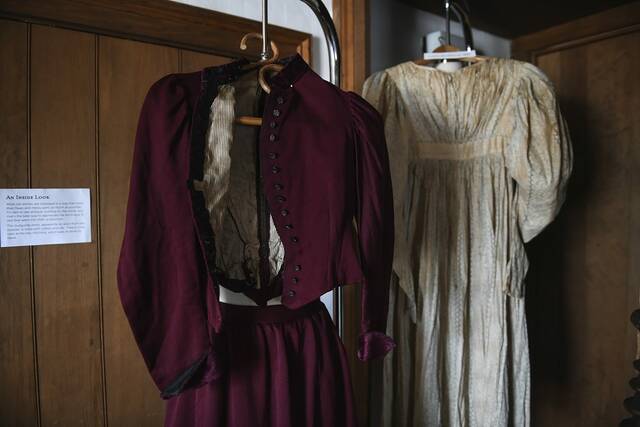Compass Inn Museum exhibit in Laughlintown explores 'Fabric of Our Lives'
The evolution of technology used in textile production is the focus of the new exhibit “The Fabric of Our Lives: 1,000 Years of Textile Innovation,” at Compass Inn Museum in Laughlintown.
The display allows the museum to showcase items not often highlighted at the historic stagecoach stop. The site interprets transportation and daily life of the early 1800s, via tours of the restored inn, cookhouse, blacksmith shop and barn housing an authentic, restored stagecoach and Conestoga wagon.
“Textile production doesn’t necessarily tie in to the main focus of Compass Inn Museum on a day-to-day basis,” said curator Emily Barth, head museum interpreter at Ligonier Valley Historical Society, which operates the site.
“Although nearly every home had at least one spinning wheel while the inn was in operation and roughly one in five homes were equipped with a loom, these domestic activities likely weren’t going on in any major capacity at a public establishment like the inn,” Barth said. “We’re excited, therefore, that our current exhibit gives us the opportunity to bring out and showcase some of the rarely seen items in our archives.”
Related:
• West Overton Museums presents exhibit on Industrial Revolution
Most items for the exhibit, covering three rooms on the inn’s second floor, were sourced from the historical society’s collections. One spinning wheel, a wool picker and a pair of antique wool carders are from Barth’s working collection.
quilt
“Clothes, blankets and other textiles make up a prominent part of the historical society’s collection because textiles are a part of everyone’s family history, whether they just used them or were actually involved in producing them,” Barth said.
“LVHS also has a number of spinning wheels and other equipment for processing wool and flax fibers into thread and cloth, again because making cloth was such a major part of the human experience until it was largely displaced by factory automation in the late 19th and early 20th century,” she added.
Barth was inspired to create the exhibit by a rag rug in the museum collection. Such rugs were woven from old sheets, clothes and other fabric scraps.
Notable items
Among the exhibit’s antique weaving looms, spinning wheels, tools for processing various types of fiber and a variety of antique textiles are these notable items:
• A dress with puffed gigot sleeves (also called leg-of-mutton sleeves) and a high waistline, said to be a “going away dress” for a bride leaving on her honeymoon in 1832. It shows evidence of being remade at least once.
“The dress is made of light summer-weight printed cotton and is typical of the 1830s, which is the decade when business at Compass Inn was at its height,” Barth said.
• Two crazy quilts, a style that gained popularity after the Civil War, when fancy fabrics such as silks, satins and velvets became more readily available.
“By the 1880s, even a rural housewife could afford silk for her best dress,” Barth said. “Scraps of precious fabrics were collected into ornamental patchwork designs and embellished with embroidery.”
• A Venetian carpet of a type that was a popular floor covering in the United States in the first half of the 19th century. The carpet was donated by Cathy Cummings, a former Ligonier resident and museum employee.
“It comes to LVHS without provenance, so it is difficult to be sure about the precise details of its history,” Barth said. “What we can say is that it was a hard-wearing rug typical of a 19th century middle-class American household that had enough spare time and money to spend on modest luxuries, though not the best of the best.”
The exhibit includes a wall timeline of innovative textile technologies, spanning the invention of the spinning wheel in 1000 AD to modern-day textile automation, which started with the Industrial Revolution in the 19th century.
“Rachel Armor, co-owner of Compass Hotel with her husband, Robert, would have been wealthy enough to purchase premade fabrics rather than having to weave her own. Nevertheless, spinning and weaving wool and linen were common domestic activities while the inn was in business,” Barth said. “As industrialization took over toward the end of the 19th century, the Armor family collected spinning wheels and textile tools in a family museum to preserve these dying arts.”
The textile exhibit is running through October and might be extended through the end of the year, said Sara Paterson, LVHS marketing and communications coordinator.
It can be viewed during the inn’s operating hours, 11 a.m.-4 p.m. Tuesdays through Sundays. Docent-led tours are available.
For information, call 724-238-4983, email lvhscompassinn@gmail or visit compassinn.org.
Shirley McMarlin is a Tribune-Review staff writer. You can contact Shirley by email at smcmarlin@triblive.com or via Twitter .
Remove the ads from your TribLIVE reading experience but still support the journalists who create the content with TribLIVE Ad-Free.

